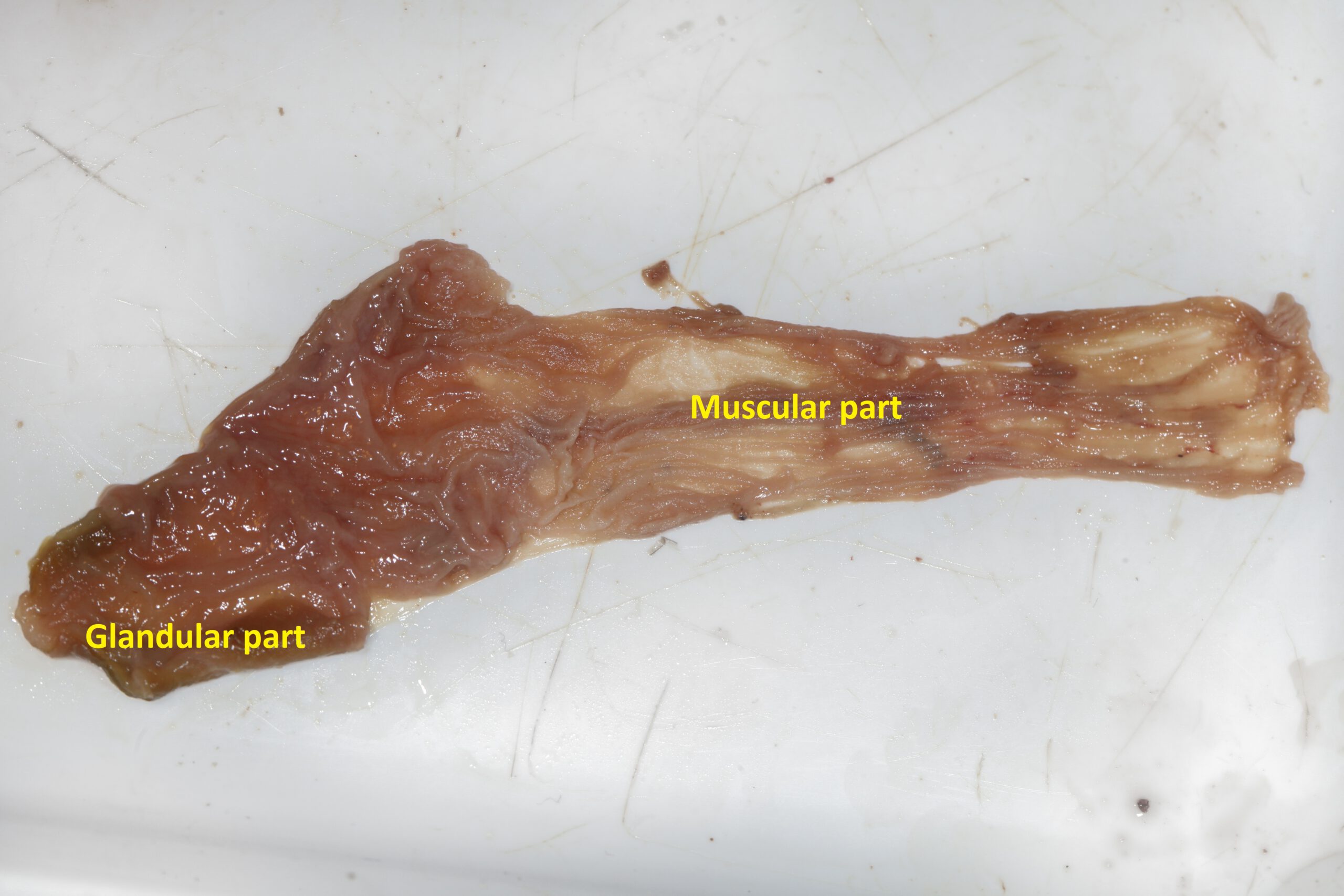Carrying offspring for safety requires sacrifices
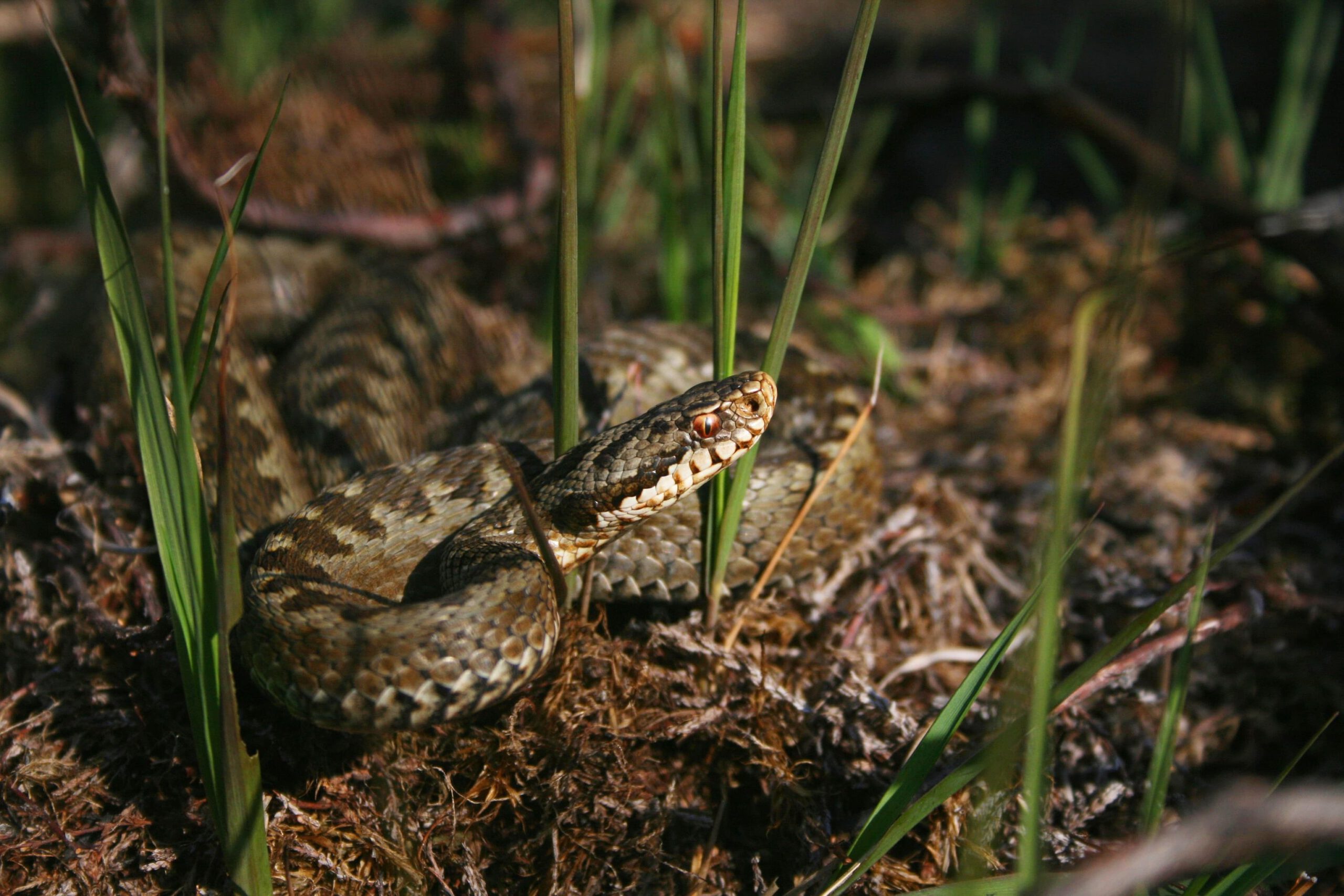
European adders occur in a variety of habitats with a large variation in vegetation structure, such as heathlands and grasslands with scattered forest patches. This habitat complexity is crucial for adders in order to support their foraging, basking and hibernation behaviour and to offer protection from predators.
Smell by tongue
In early spring, male adders crawl out of their winter shelters and use the first rays of sun to mature their sperm. Shortly after, their search for a mate starts by following scent traces of female adders, picked up from the air with their tongue.
By their split tongues (shown here in a grass snake), snakes are believed to be able to smell the direction from which an odour is being spread, but this is not yet certain.
The ‘tongue smelling’ of a snake is not similar to our smell (they have ‘nose smelling’ as well). In fact, the tongue itself does not have the receptors (“detectors”) that allow snakes to find a mate or food (snakes do not experience taste).
The specific receptors that do so are located in the organ of Jacobson, in the roof of the mouth cavity. This explains why snakes constantly stick out and retract their tongue: they have to bring the scent molecules to this organ to perceive what the tongue has picked up.
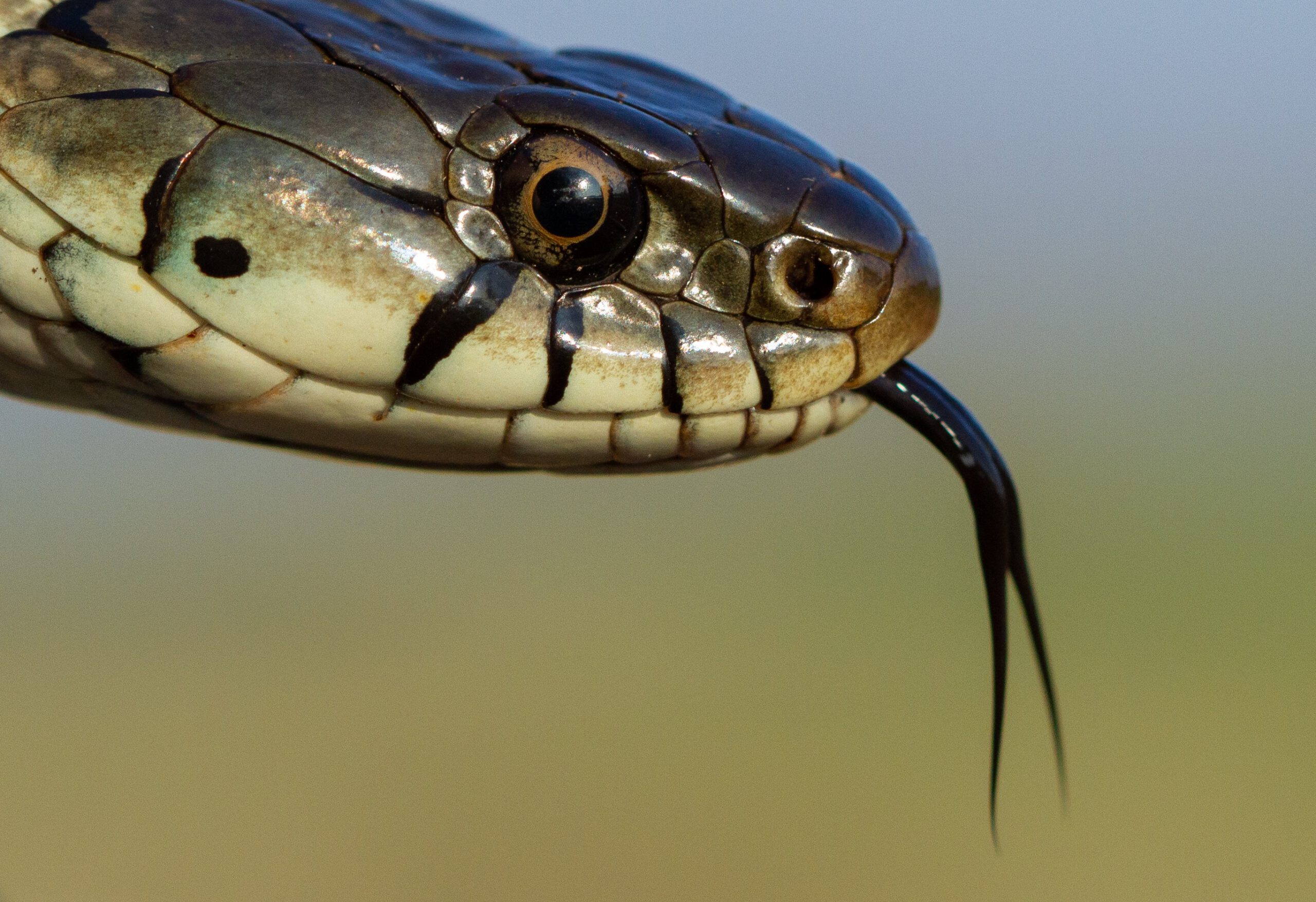
Mating dance
Males can be aggressive to each other when fighting over the right to mate. Although being venomous, they do not bite each other, but perform impressive ‘adder dances’ instead, during which they wrap themselves around each other, trying to press their rival down with their head. Exhaustion eventually decides which male wins. Venomous snakes are typically not prone to their own venom, as they have antidote constantly circulating in their blood (although this may not be enough to overcome a large venom injection).
European adders are ovoviviparous, which means that the embryos develop inside unshelled eggs that remain in the mother’s reproductive duct (six of these embryos are shown here). When the brood is ready to hatch, the female gives birth to live young. European adders are so-called capital breeders, which means that females use energy and essential nutrients stored in their bodies and in the yolk of their eggs to produce offspring.
This contrasts with income breeders, which fuel their reproduction with energy from simultaneous feeding. Capital breeding requires an enormous energy investment of the female, which probably is the reason for female European adders to reproduce only once every two or three years.
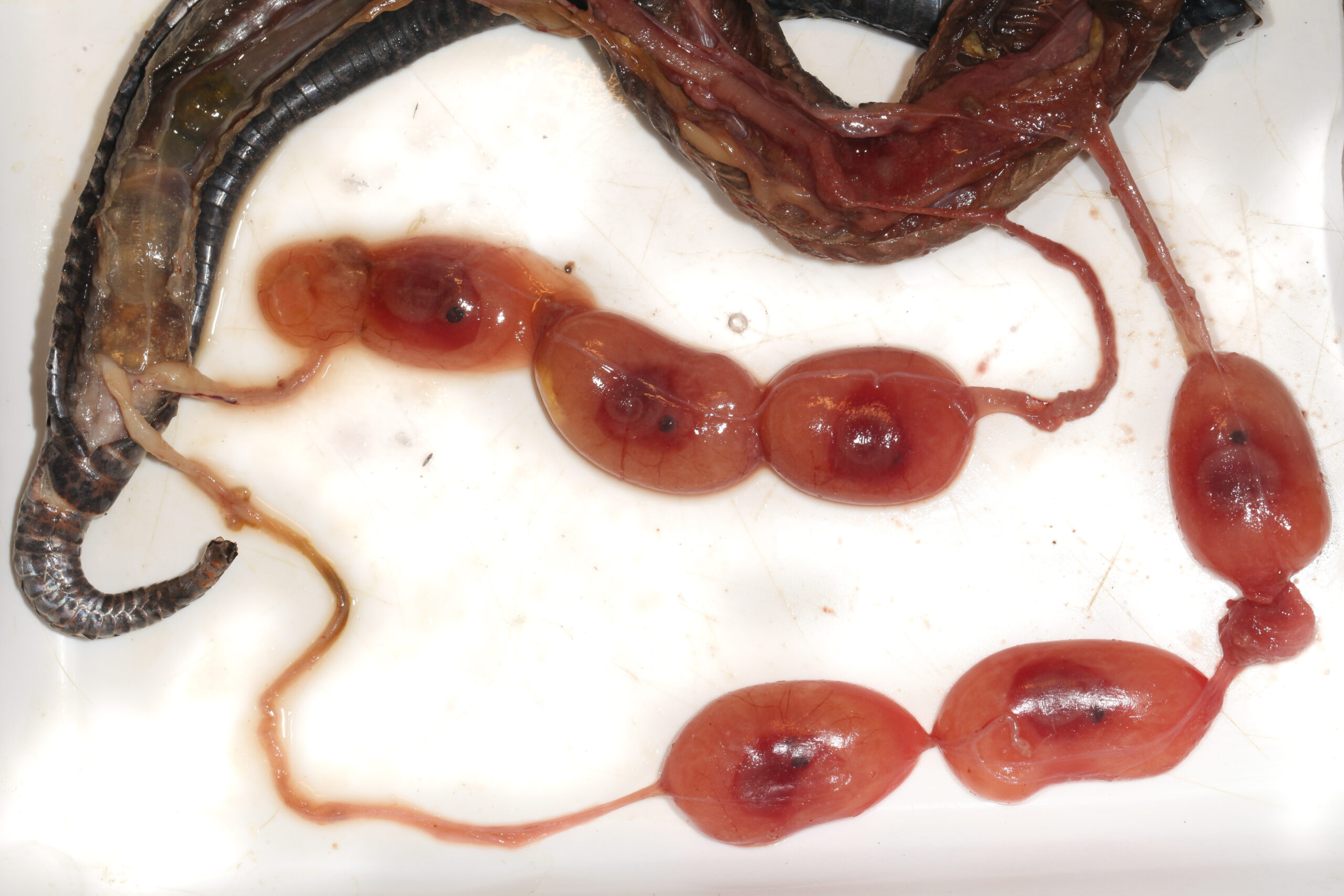
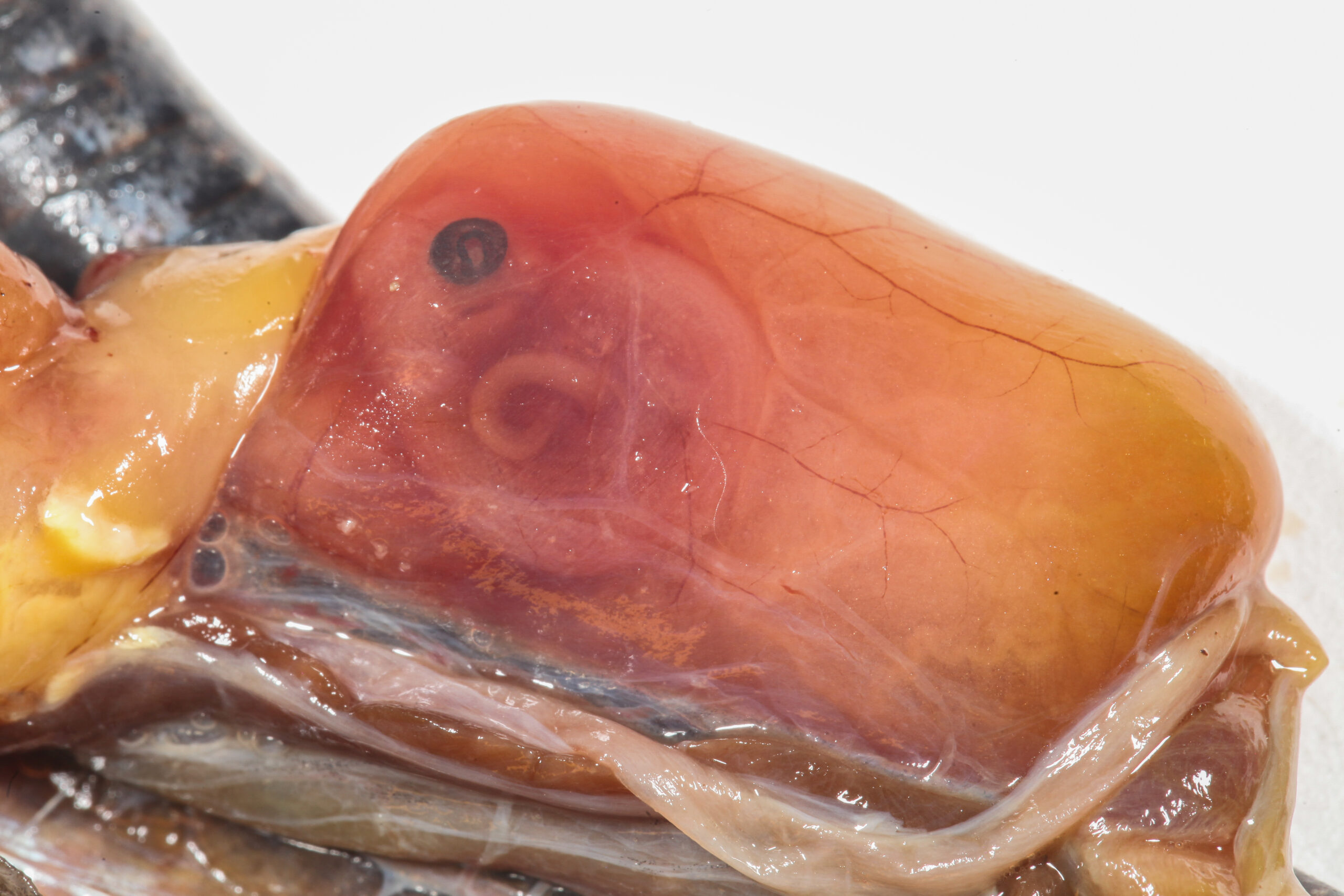
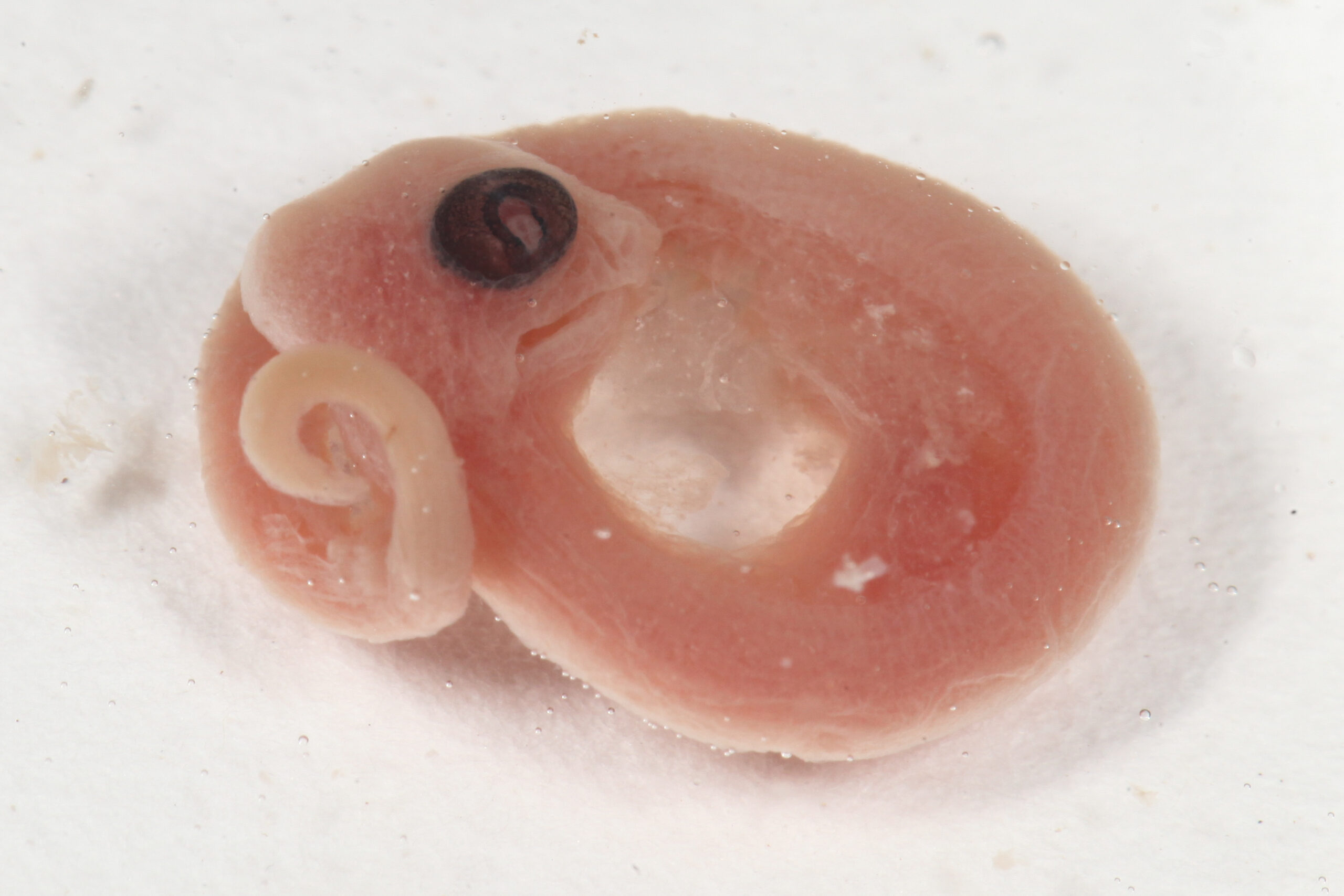
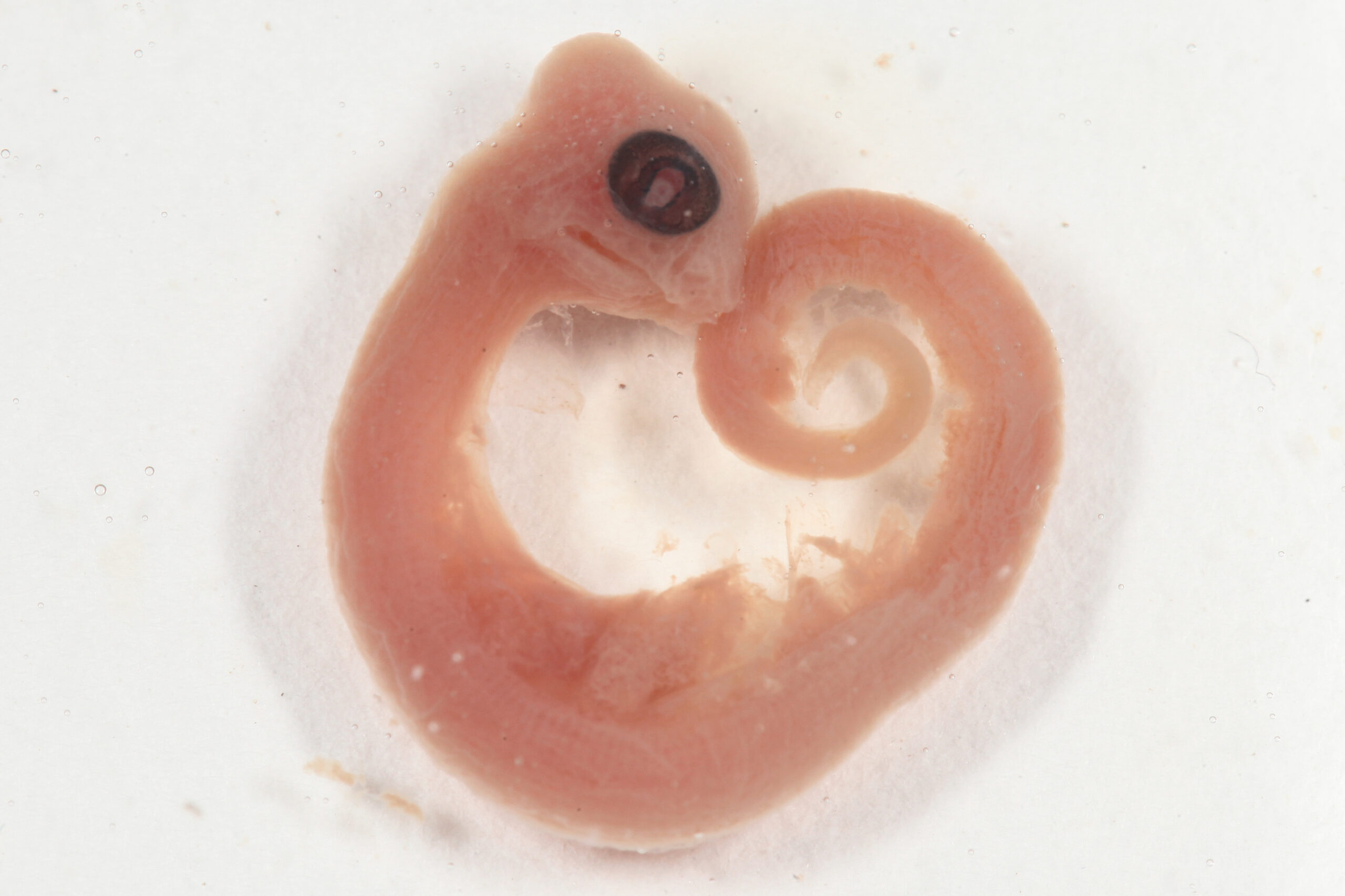
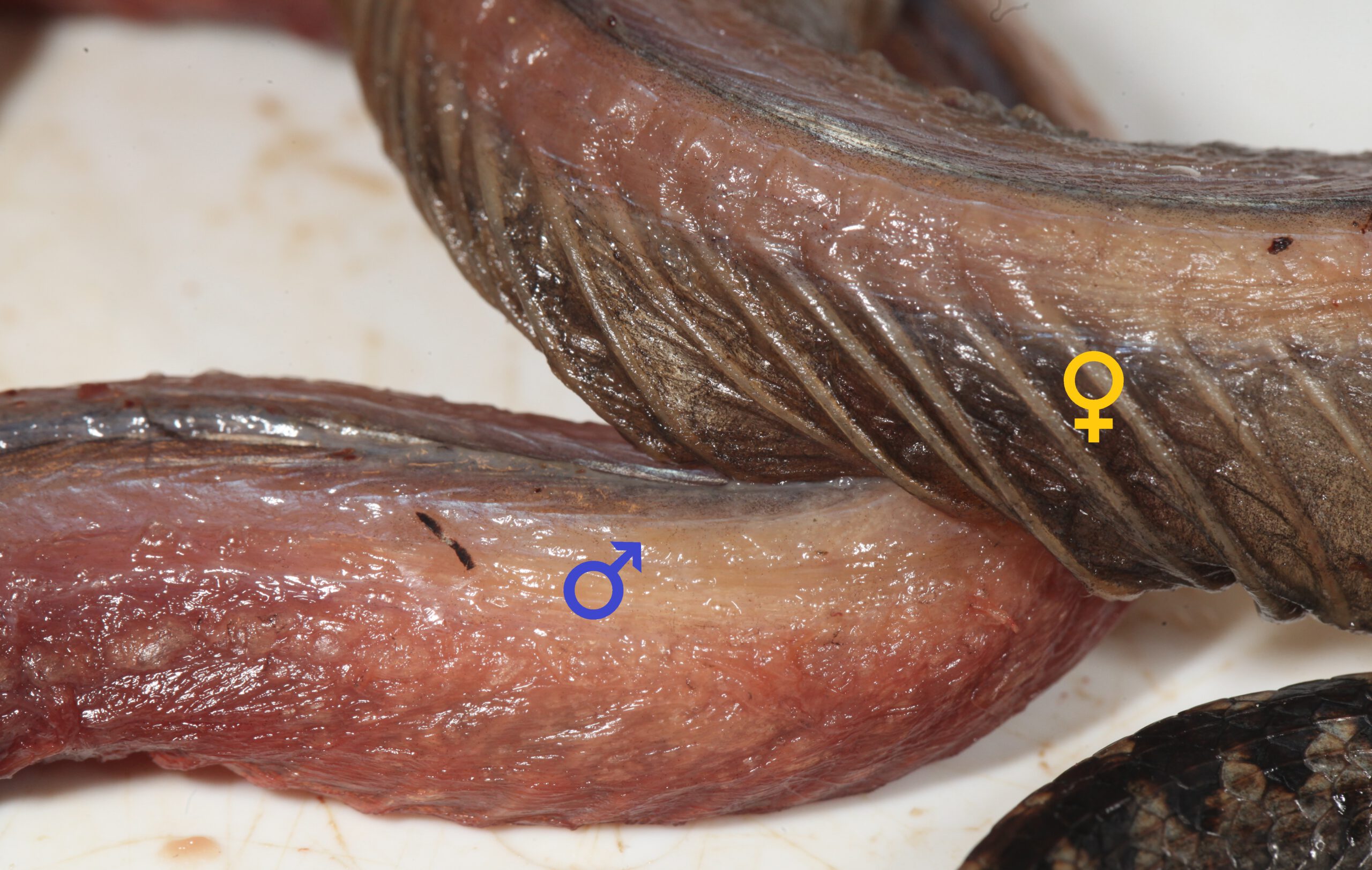
The sacrifice that females make to produce offspring becomes clear from the contrast with the body condition of males in reproductive season: males have relatively much thicker muscle layers covering their body and have larger fat reserves.
The testes are huge and probably produce much sperm, which allows them to fertilise numerous females over the season. Males only stay with a female for a few days after having mated.
Crucial sunbathing
The internal body temperature of females must be maintained high enough to enable the embryos to grow. So, body temperature control is crucial for female adders. Under sunny conditions, roads and bicycle tracks in their habitat can provide a warm surface, which is excellent. However, many snakes are killed this way…
European adders also live well-above the tree line in mountain landscapes and north of the arctic circle. Therefore, carrying their offspring around ensures that suitable temperatures for embryo development can be maintained.
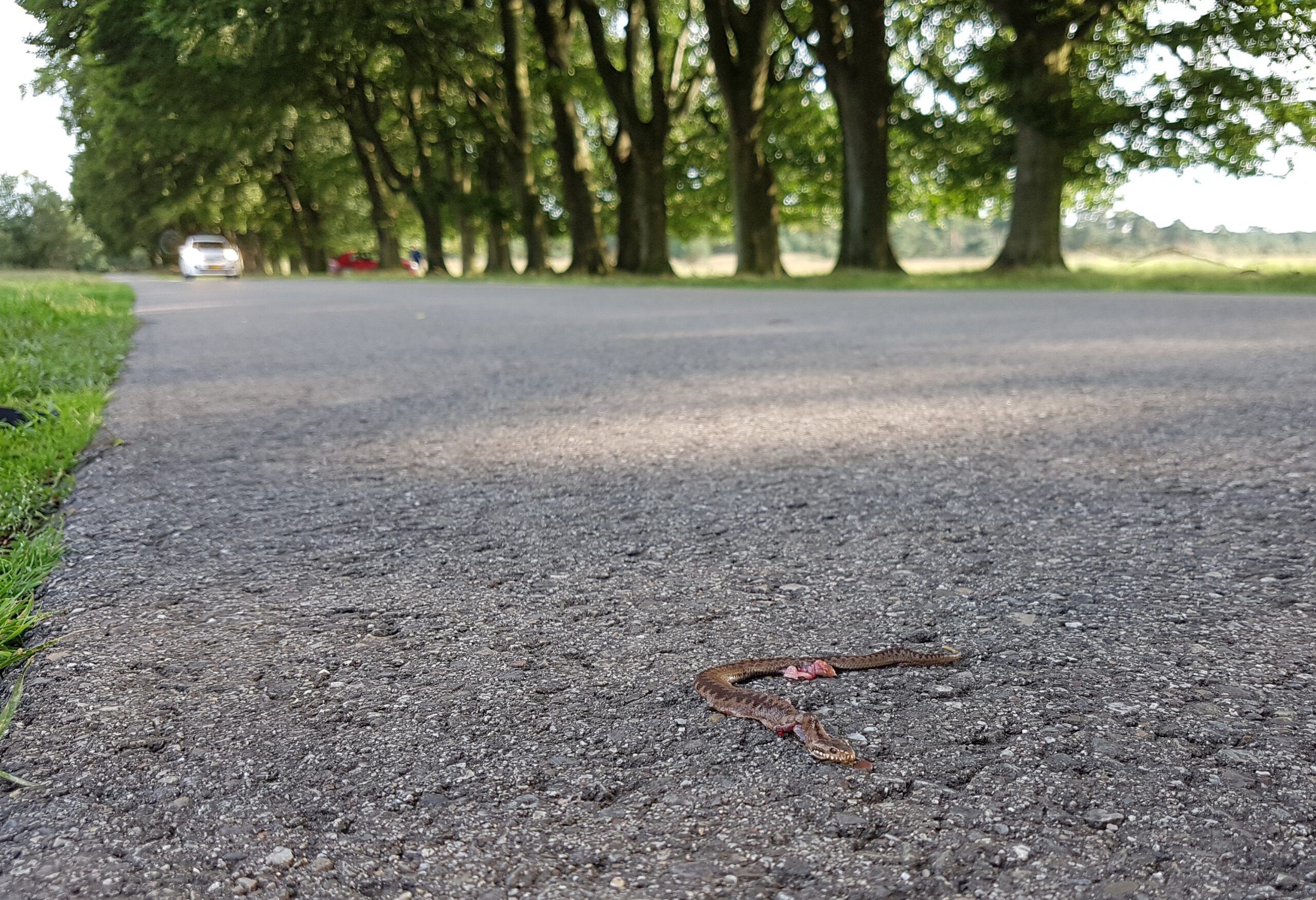
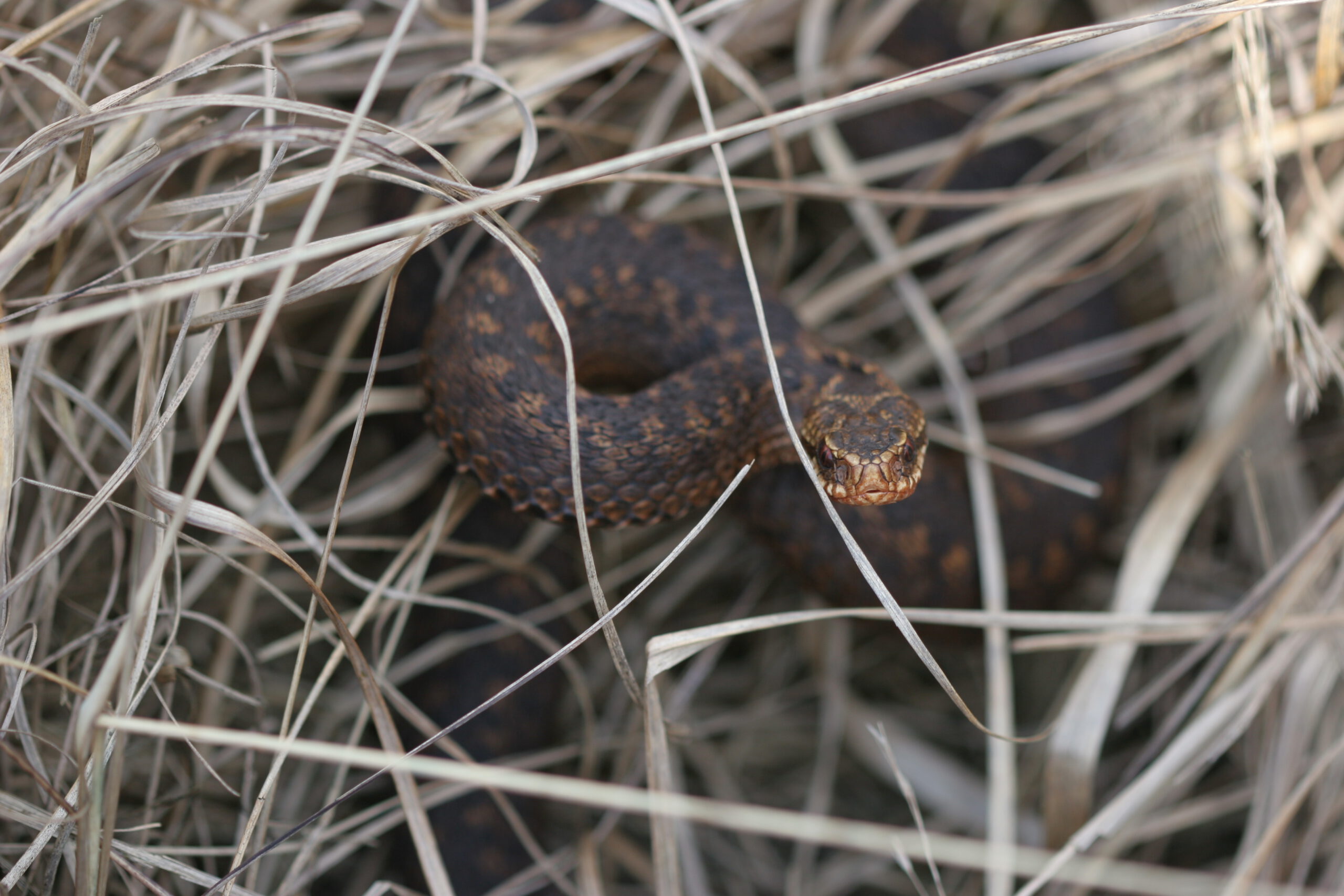
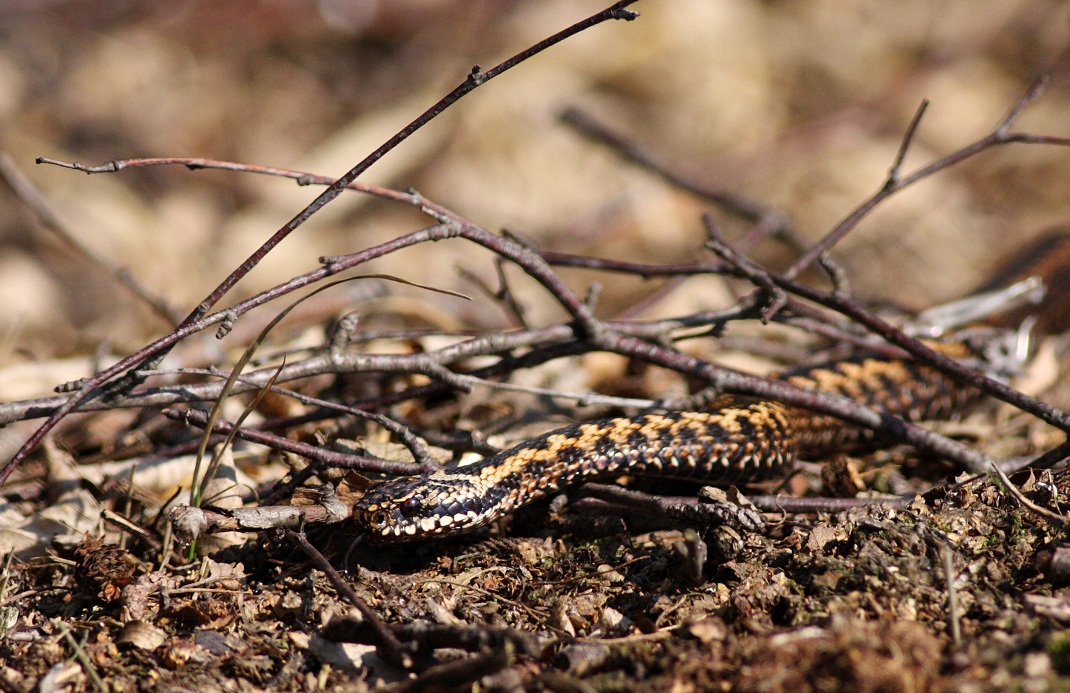
Continue reading
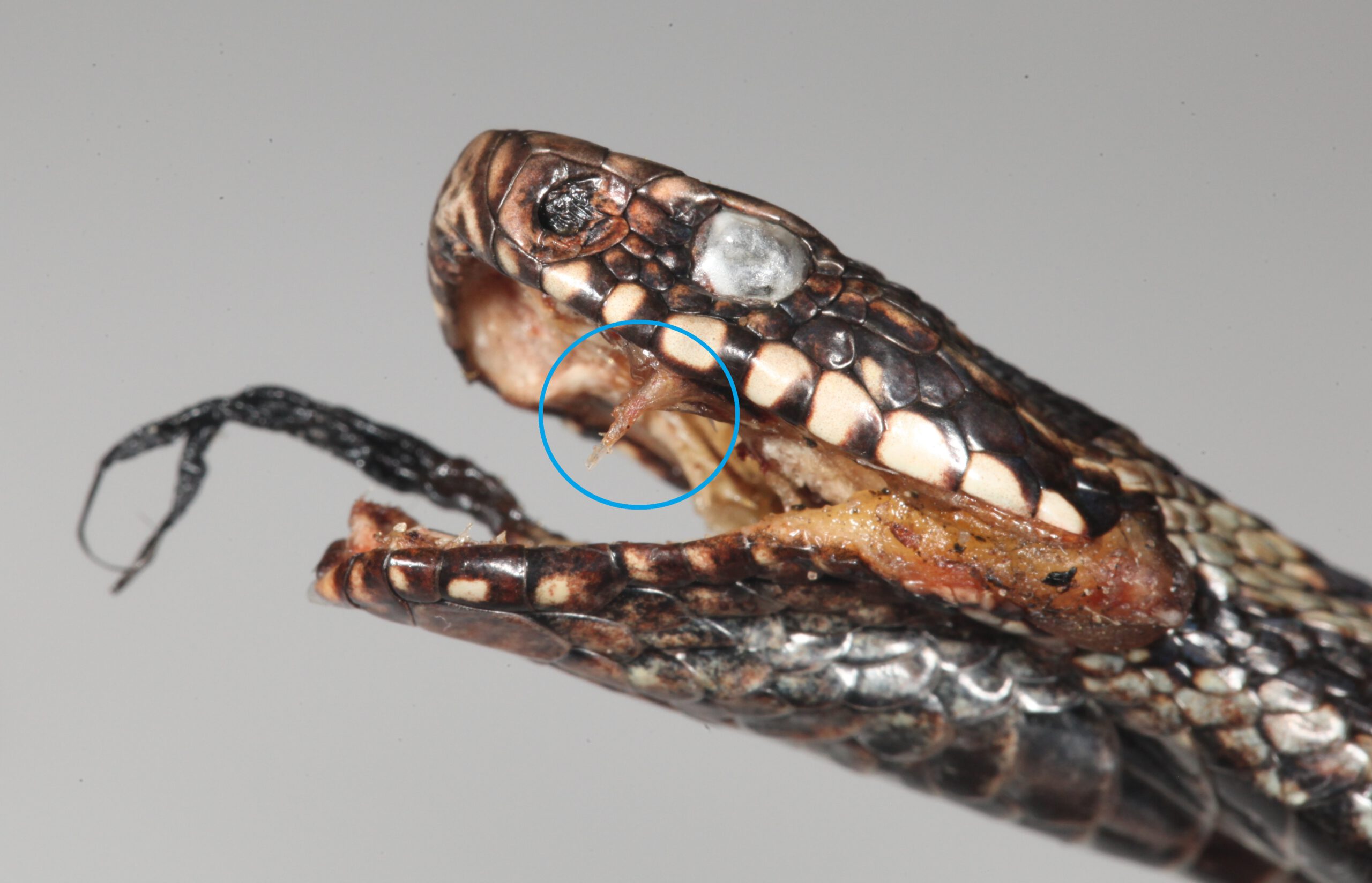
The hunt
European adders mainly hunt on vertebrates, such as small mammals, reptiles and ground-nesting birds. They mostly attack from an ambush, paralysing their prey with venom after a superfast bite. The fangs are stored in the roof of the mouth at rest, and swing forwards just before the prey is bitten.
The left and right halves of the lower mandible are joined by an elastic ligament at the front, which enables adders to open their mouth wide enough to swallow large prey items whole. To manoeuvre a large prey inwards, both lower jaws are alternatingly placed forward on the prey and then retracted.
Give way to prey
The arrangement of the internal organs allows large prey items to move through the digestive system without hindering other internal organs. The opening through which they breathe (the ‘glottis’) can be moved sideward and the trachea is held stiff due to bony rings, in order to continue the airflow while swallowing a prey.
The glottis is typically closed and only opened when breathing in or out. When breathing out, a small piece of cartilage inside the glottis vibrates, which produces the hissing sound of a snake.
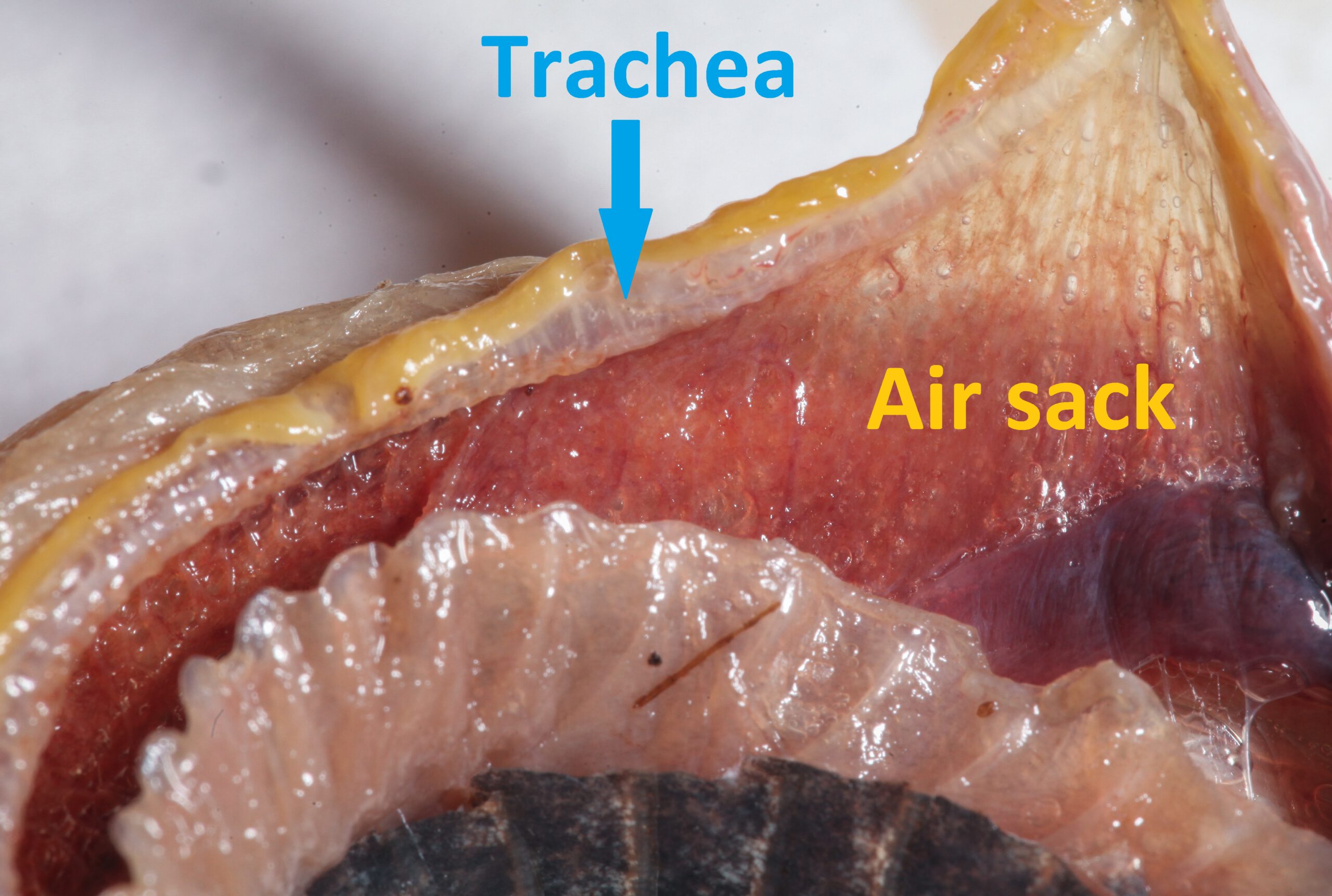
The lungs (of which the left one is very small) are elongated and at the end of the right lung an air sack connects, increasing the volume of stored air.
A second, membranous sack connects to the trachea to increase air volume even more. This stored air can make the snake last for up to two hours without taking a breath when consuming large prey.
Suitable stomach
The front part of the stomach, in which the food arrives first, has a thick wall and glands in order to produce enzymes that pre-digest and dismantle the catch.
The hind section has a thinner, muscular wall and can be stretched to accommodate a large prey and to mix the stomach content before it enters the intestine.
